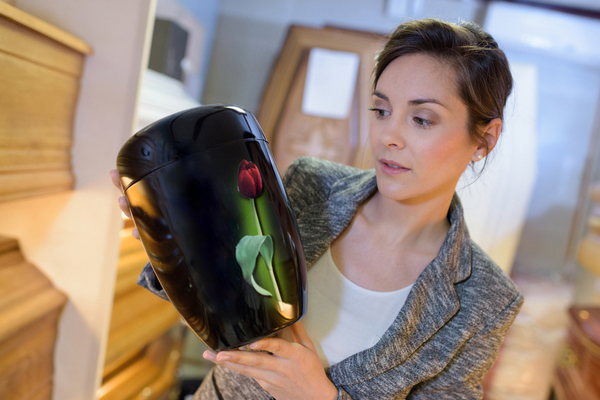
Cremation: The New Tradition
Cremation is a mechanical, thermal, or other dissolution process that reduces a body to basic compounds and is a typical alternative to a traditional burial. Cremation has a steady rise in popularity for numerous reasons such as:
- Affordability
- Flexibility
- Environmentally Friendly
- Fear of Natural Decomposition
- Simpler Arrangements
- Less stress for family members/loved ones
Beyond The Fire
The most common method of cremation is flame-based cremation which uses flames to reduce remains into bone fragments aka cremated remains. The other, not so common, method is alkaline hydrolysis which is a water-based dissolution process that uses alkaline chemicals, heat, agitation, and pressure to accelerate the natural decomposition. Both methods are legal and will reach the desired cremated results. Cremation typically leaves behind an average of five pounds of remains, but this will vary based on an individual’s weight because one pound of physical remains produces under one cubic inch of ash. It is important that this is taken into consideration during the time of the cremation process and when deciding on urns.

Fast Cremation Facts
- While cremation is an efficient process, it can still take anywhere from two to four hours for the actual cremation. Time depends on the individual’s body and other factors. The entire cremation process (transportation, storage, cremation, return) as a whole takes about 10-15 business days.
- Holding burials after cremation is a common tradition. Some cemeteries will allow urns to be buried in a plot while others require the use of an urn vault.
- Cremation has been around for quite some time. It is suspected that the earliest case of cremation was during the early Stone Age – around 3000 B.C.
- Ashes can be stored in columbarium, a structure used to pay respect and house funeral urns allowing family members and loved ones to be able to visit whenever.
Urns, The Treasured Remembrance

Keepsake Urns are smaller in size and are typically used for families who want to share cremated remains of loved ones between multiple people. Keepsake urns are also common after an initial spread of the ashes if the family decides to keep a portion. They range from 1 – 50 cubic inches compared to the typical two hundred cubic inches of a standard urn.
Biodegradable Urns are urns that are made from non-toxic, ecologically-sound materials that will eventually break down naturally in nature. Materials can range from mulberry bark, bamboo, plant materials, wood, paper, cornstarch, organic compost, or natural clay.
Companion Urns are exactly what their name implies, a way to store the cremated remains of two people. They can come in either single or double compartments and are typically used to memorialize couples who want to remain together after death.
Veteran Urns pays tribute to members of the Armed Forces. These urns are specifically designed with patriotic and military themes and are specific to the branch of service the deceased represented.
Picture Urns look like photo frames but have a hidden chamber to store ashes of a loved one. Photos for these specific urns can either be laser etched on to the urn itself or there it is placed in a frame like normal. It is important to remember if you chose the laser etched option that the photo you pick is clear and focused.
Art Urns are a way to mix fine art with the cremated remains of a loved one. Art urns have the endless limitations of art itself. They can be made of materials such as glass, bronze or ceramics and can be created to fit any desired taste.
An Introduction To Terminology
Now when taking part of the cremation process there is plenty of terminology introduced to families. While most of it is self-explanatory, it is important to be familiar with it to make the process easier to understand and go through in general. This terminology includes but is not limited to:
Authorizing Agent: the person(s) legally entitled to control the disposition of the cremated remains.
Direct Cremation: a cremation that happens without any formal viewing
Cremated Remains: the remains of the cremated body after completion of the cremation process.
Cremation Chamber: the enclosed space where cremation takes place.
Crematorium: this building houses the cremation chambers, administrative offices, mortuary prep rooms and cemetery maintenance.
Cremation Interment Container: A rigid outer container that is composed of concrete, steel, fiberglass, plastic, or some similar material in which an urn is placed prior to being interred in the ground, and which is designed to withstand prolonged exposure to the elements and to support the earth above the urn.
Disposition: The shipment, burial, cremation, or anatomical donation of the human body.
Final Disposition: The burial or other disposition of a dead human body or cremated remains.
General Price List (GPL): contains identifying information, itemized prices for the various goods and services sold, and other important disclosures.
Inurnment: The ceremony of burying an urn containing cremated remains.
Processing: the pre-pulverization process of removing any foreign materials from the cremated remains in preparation for pulverization.
Pulverization: the reduction of identifiable bone fragments after the completion of the cremation and processing to granulated particles by manual or mechanical means.
Urn: A structure designed to permanently encase the cremated remains.



